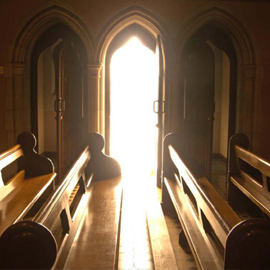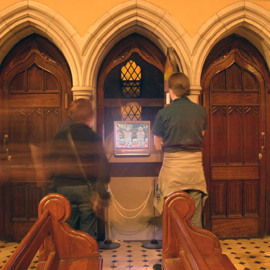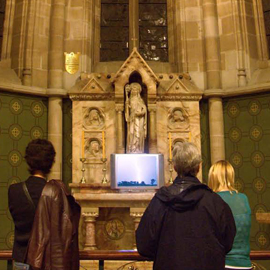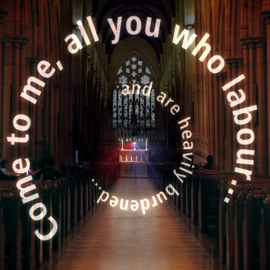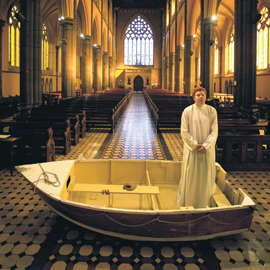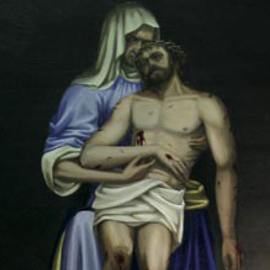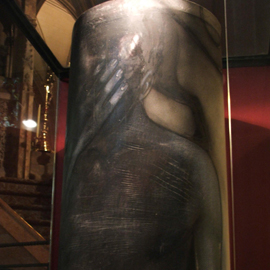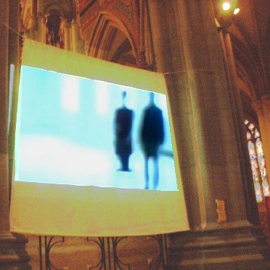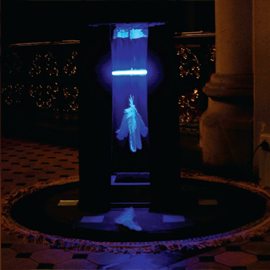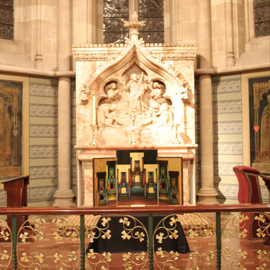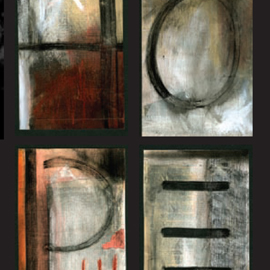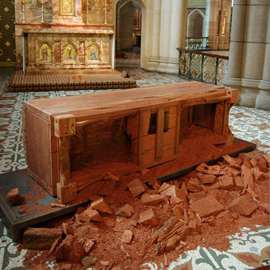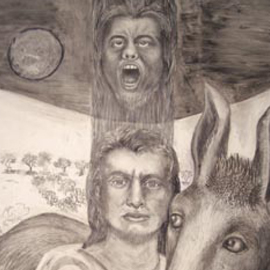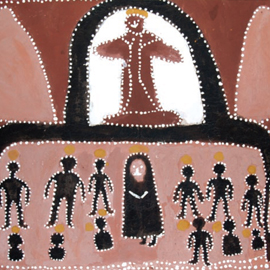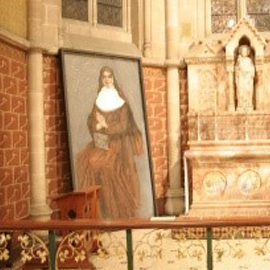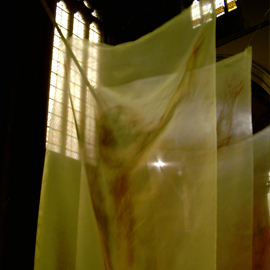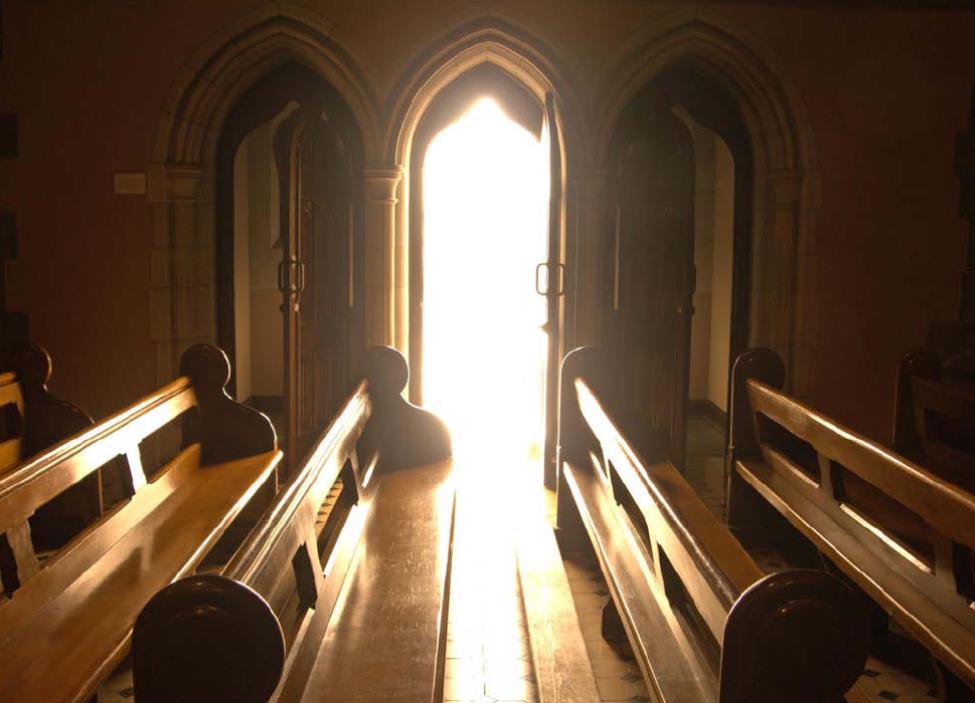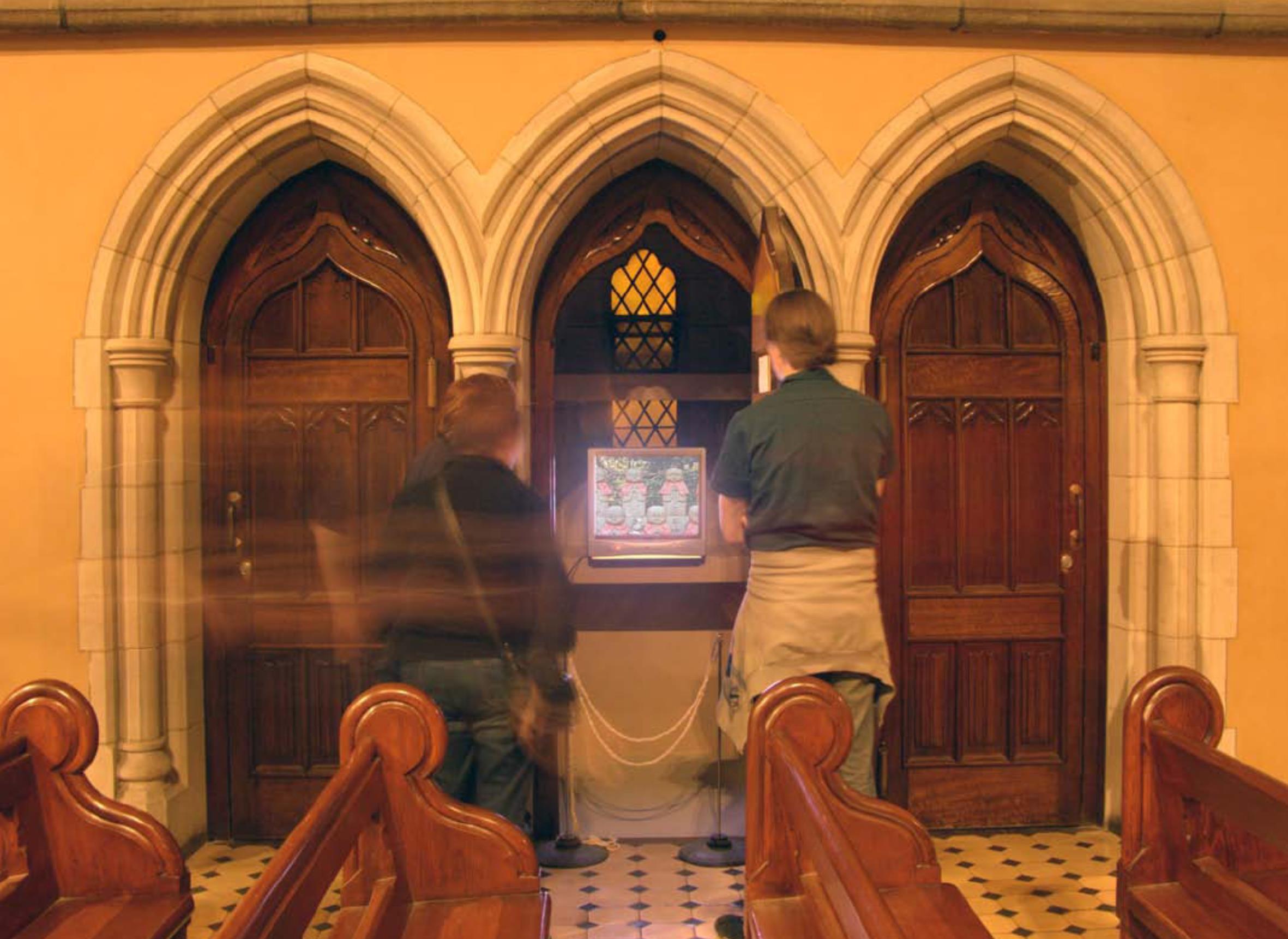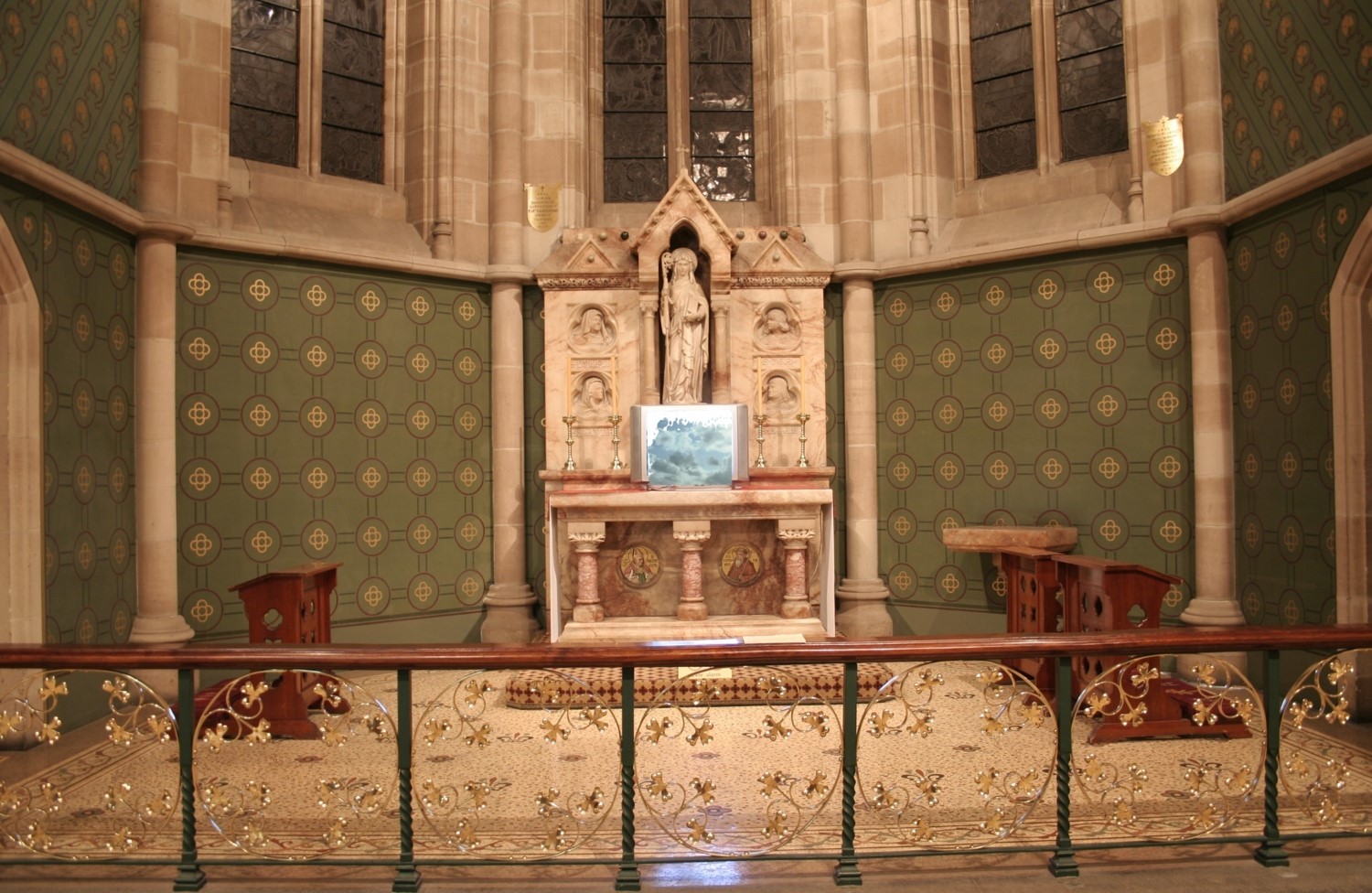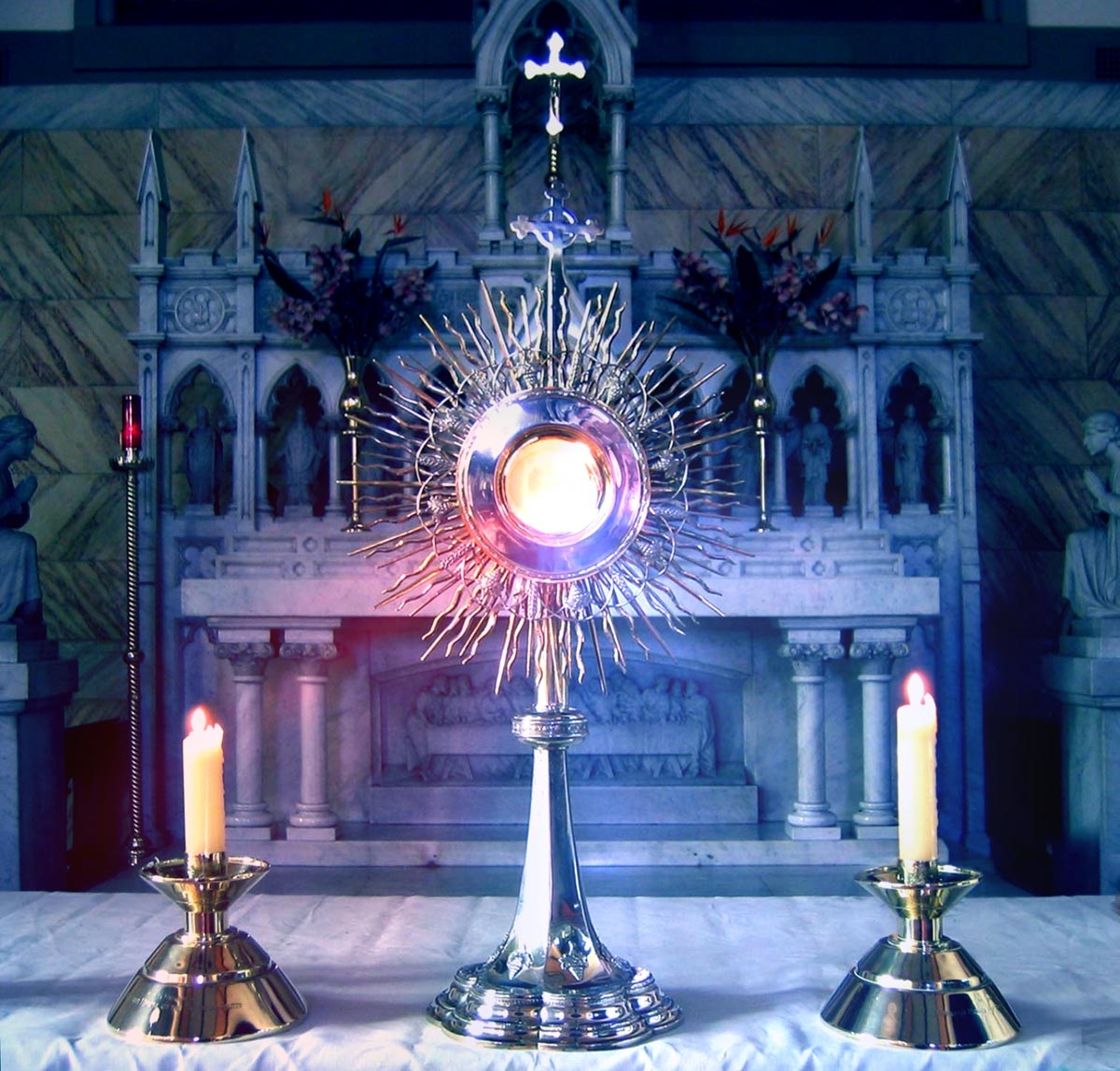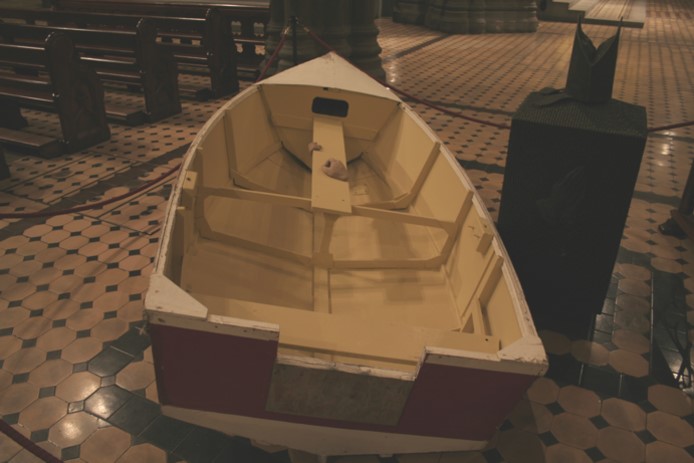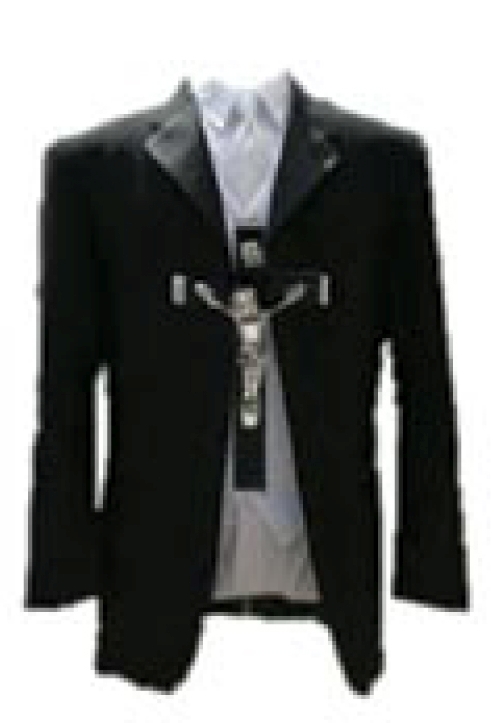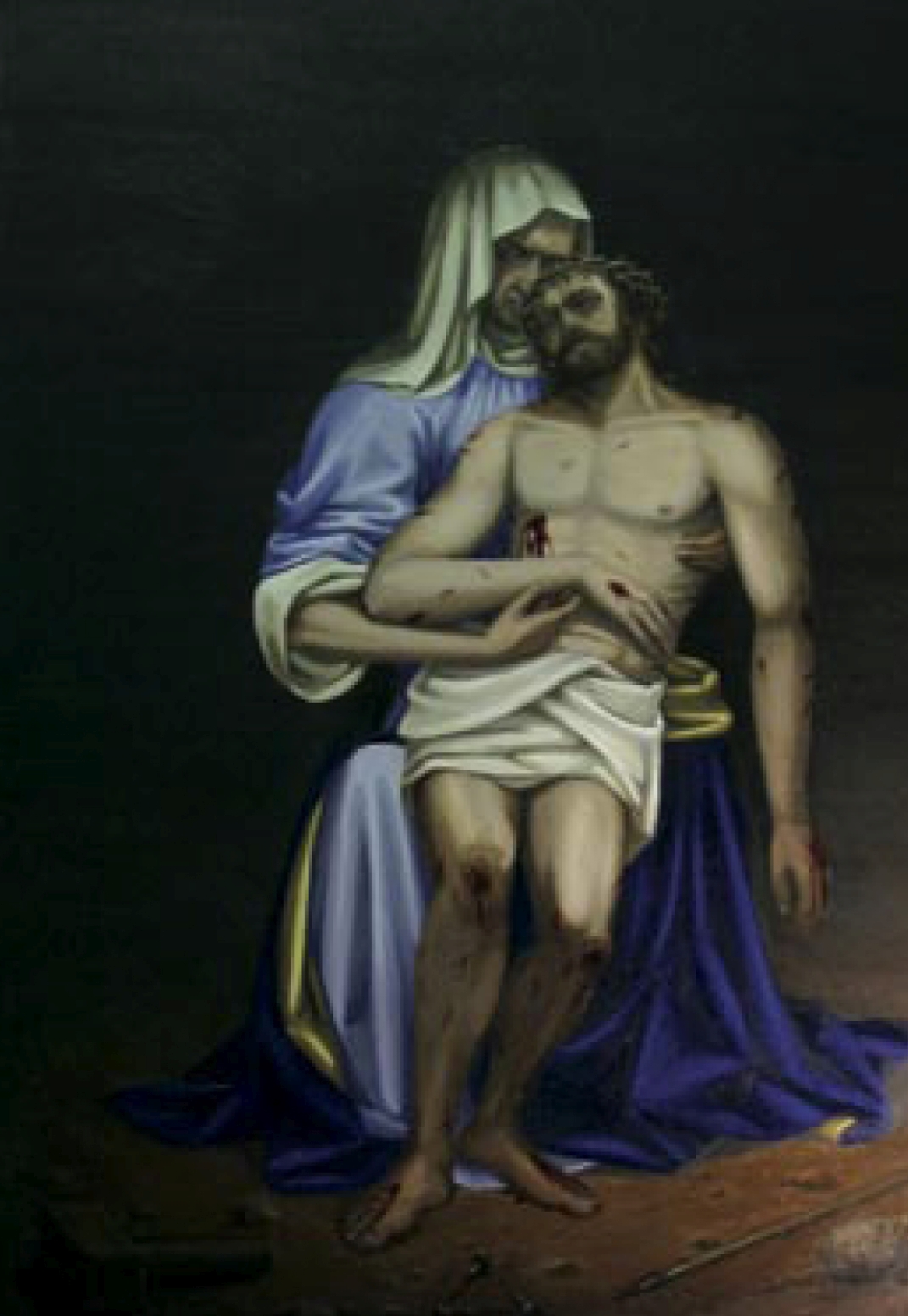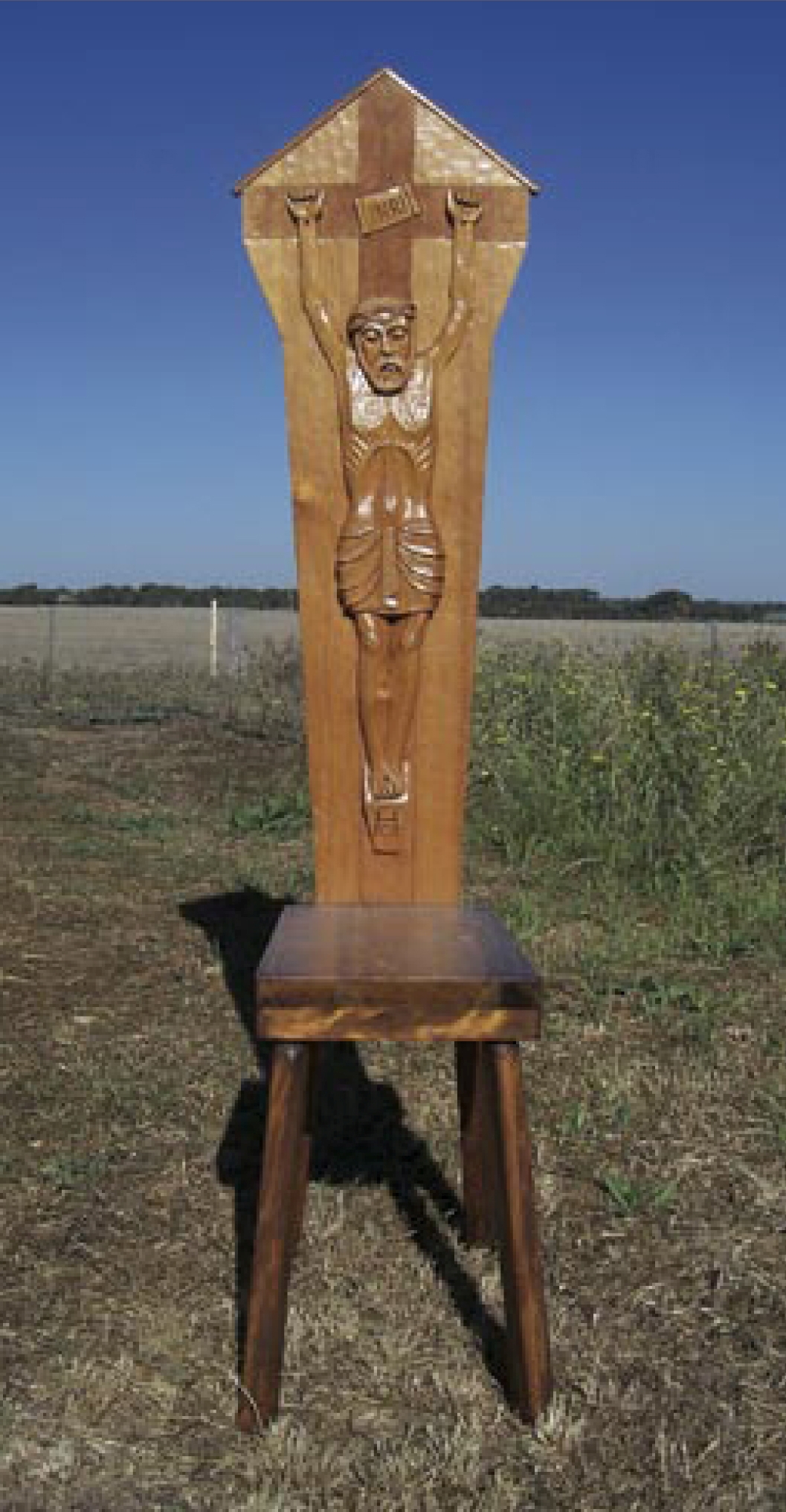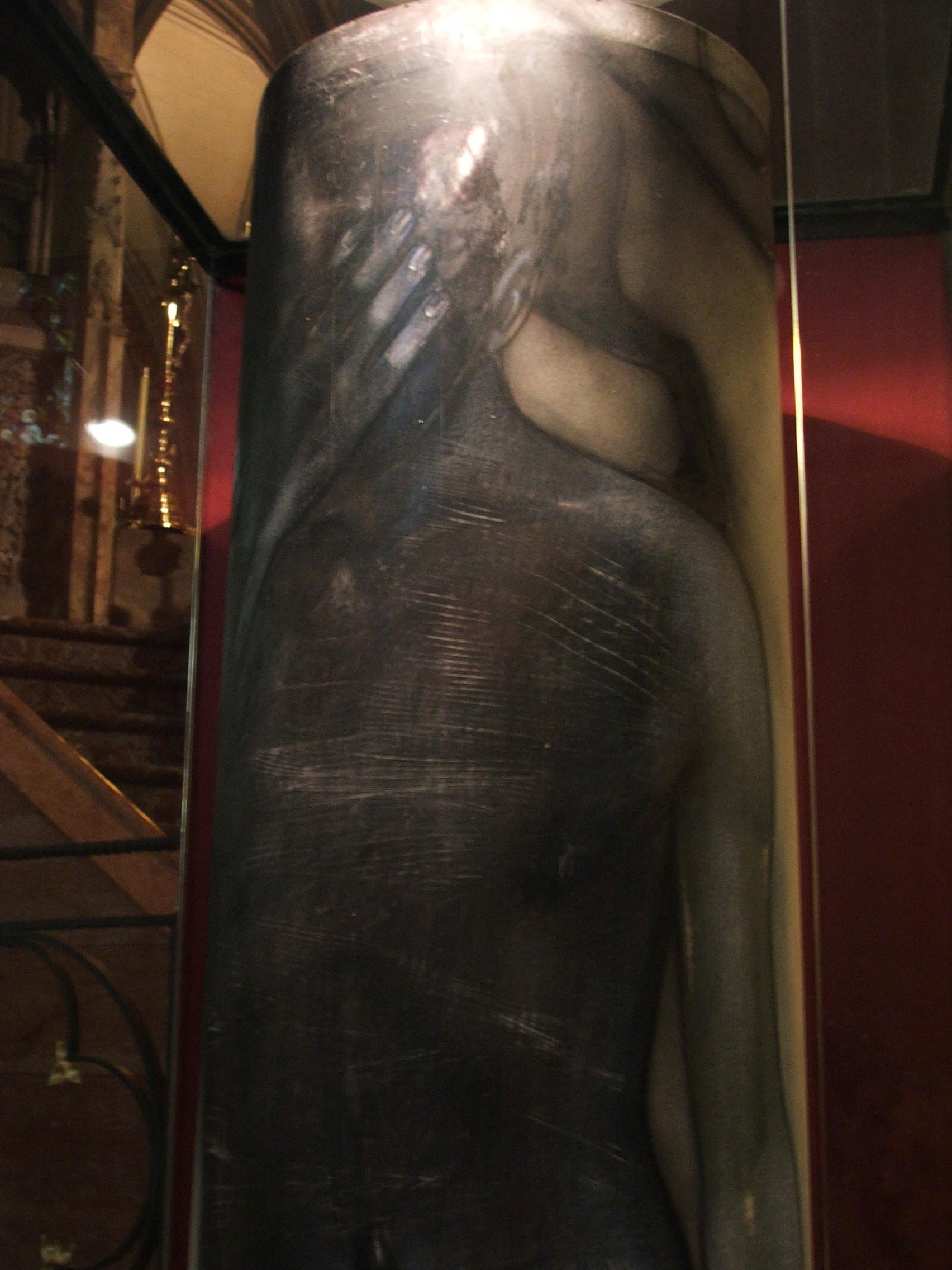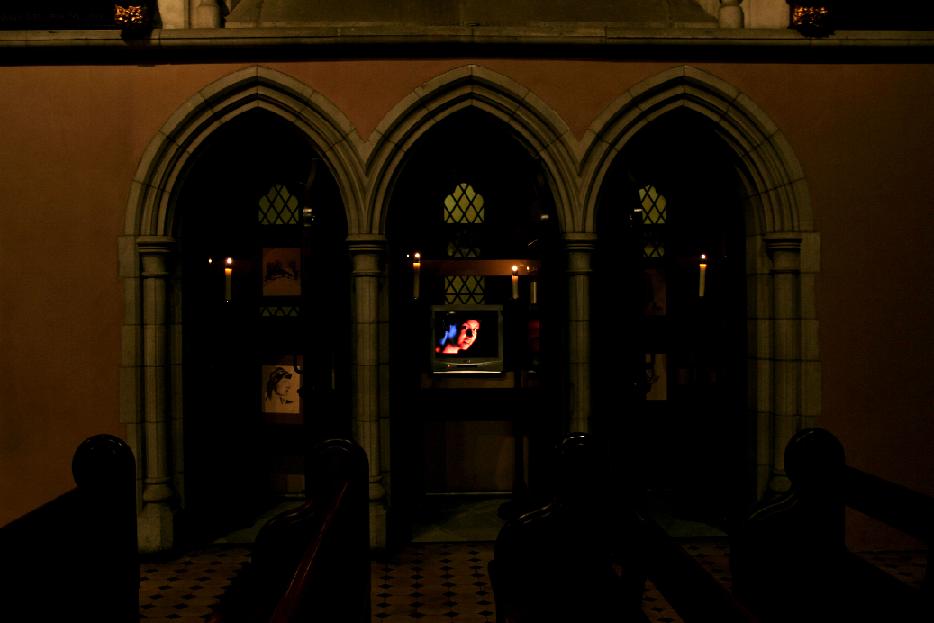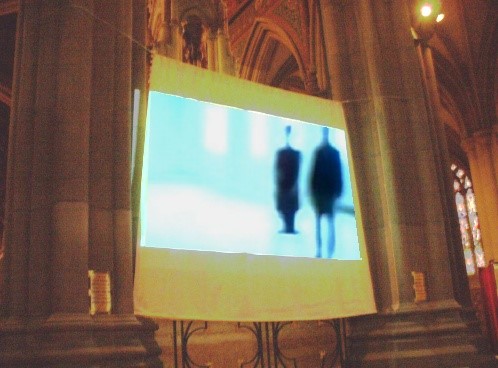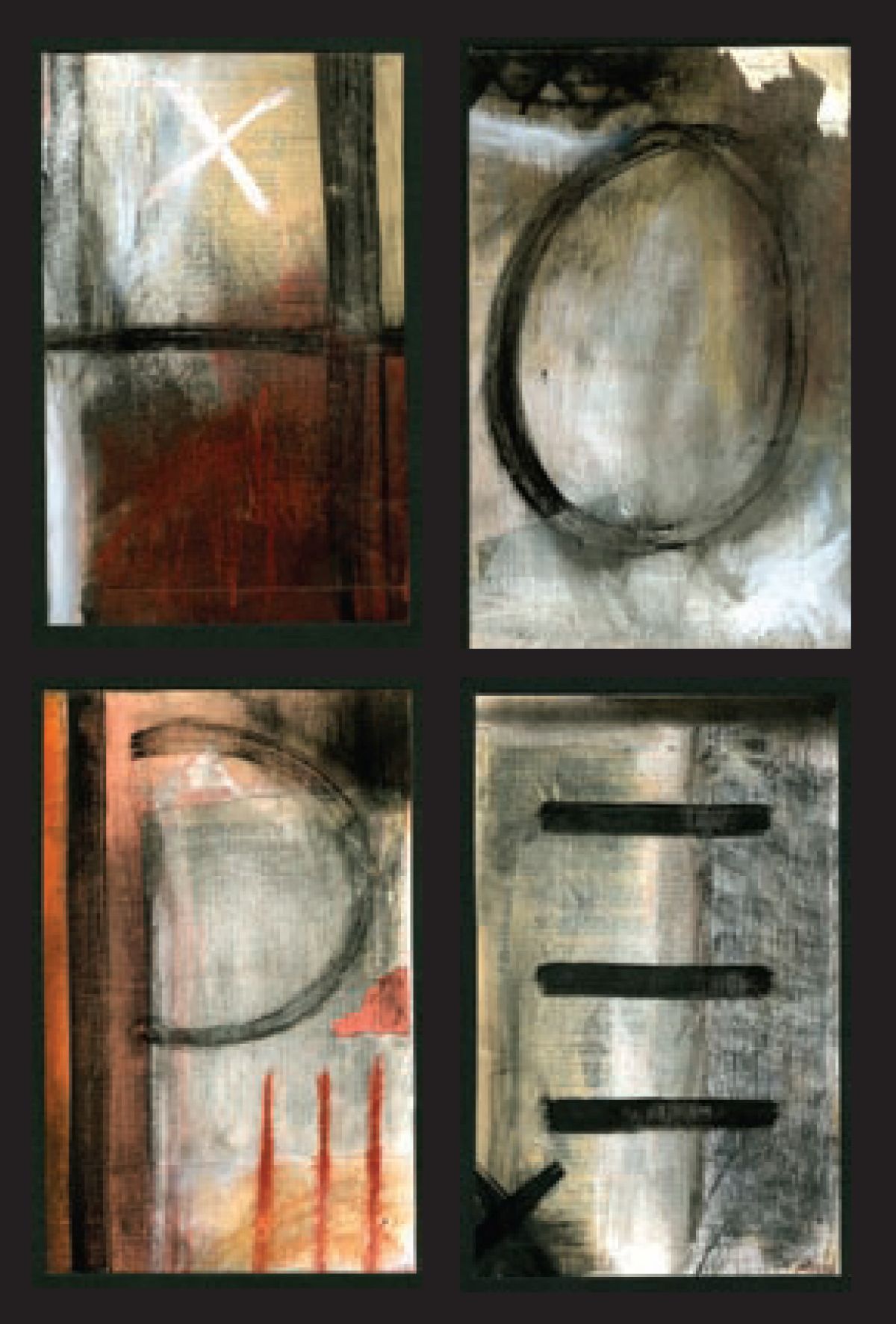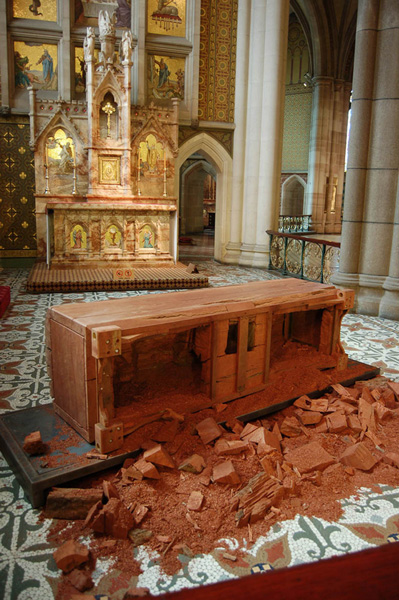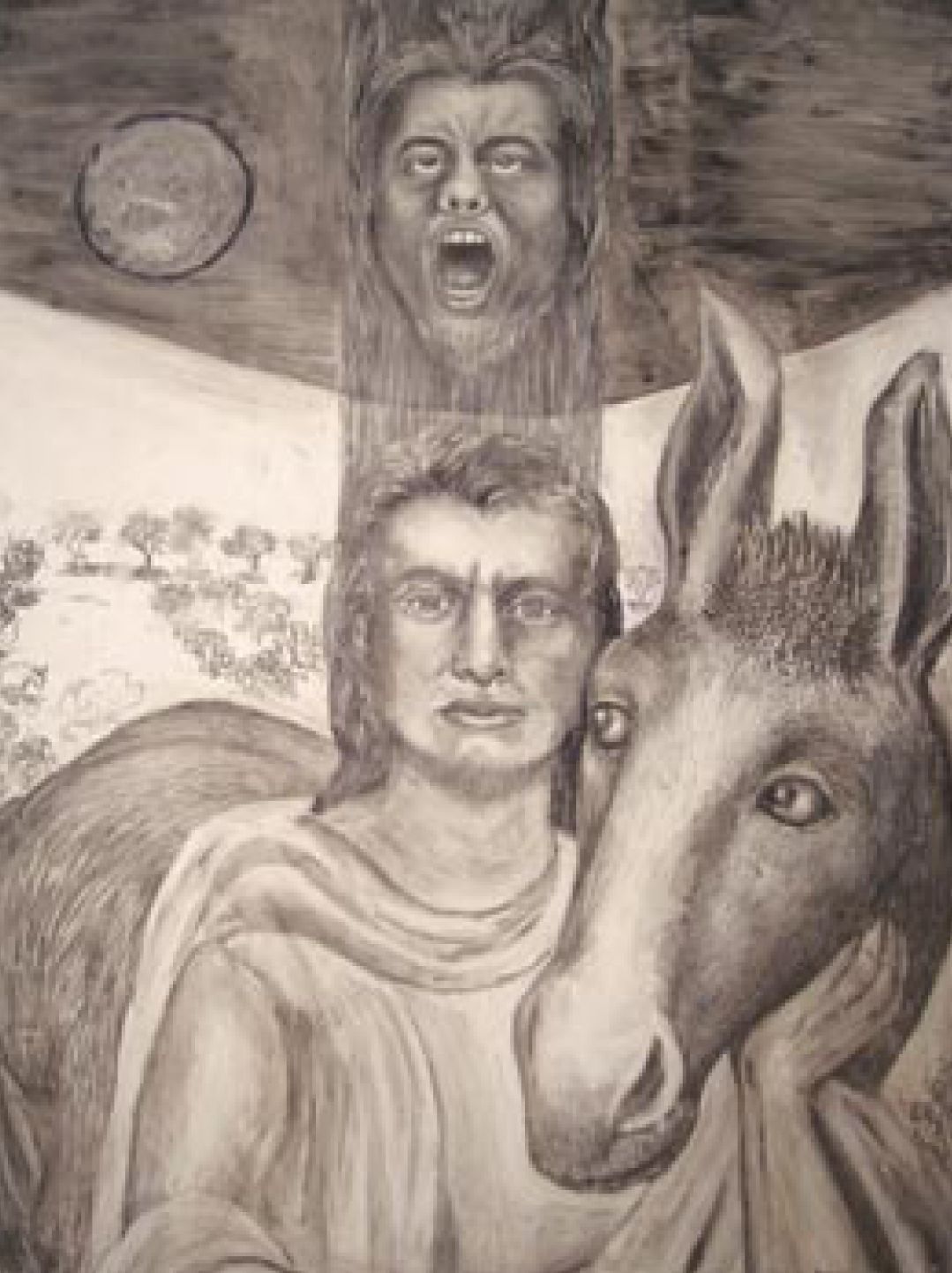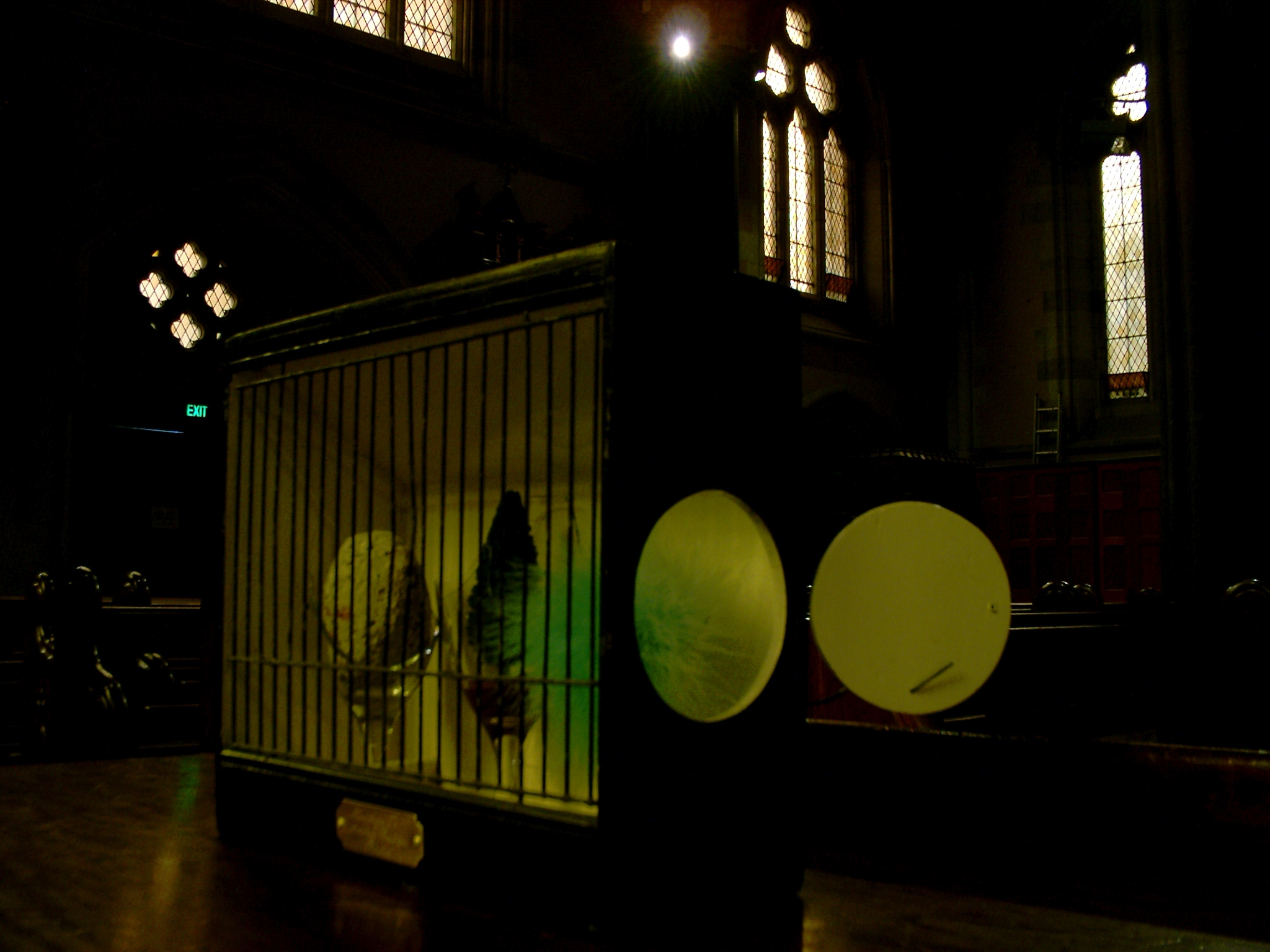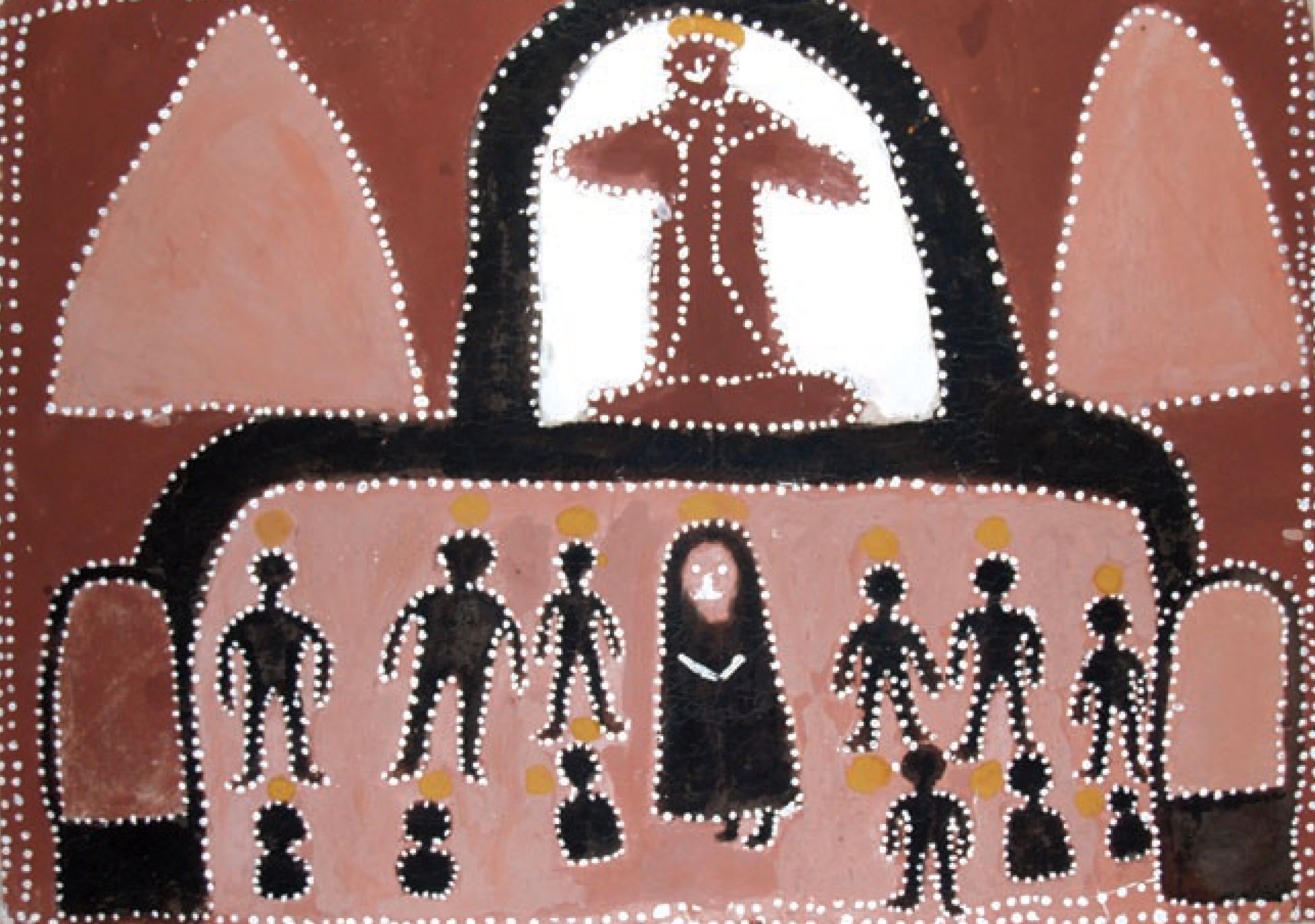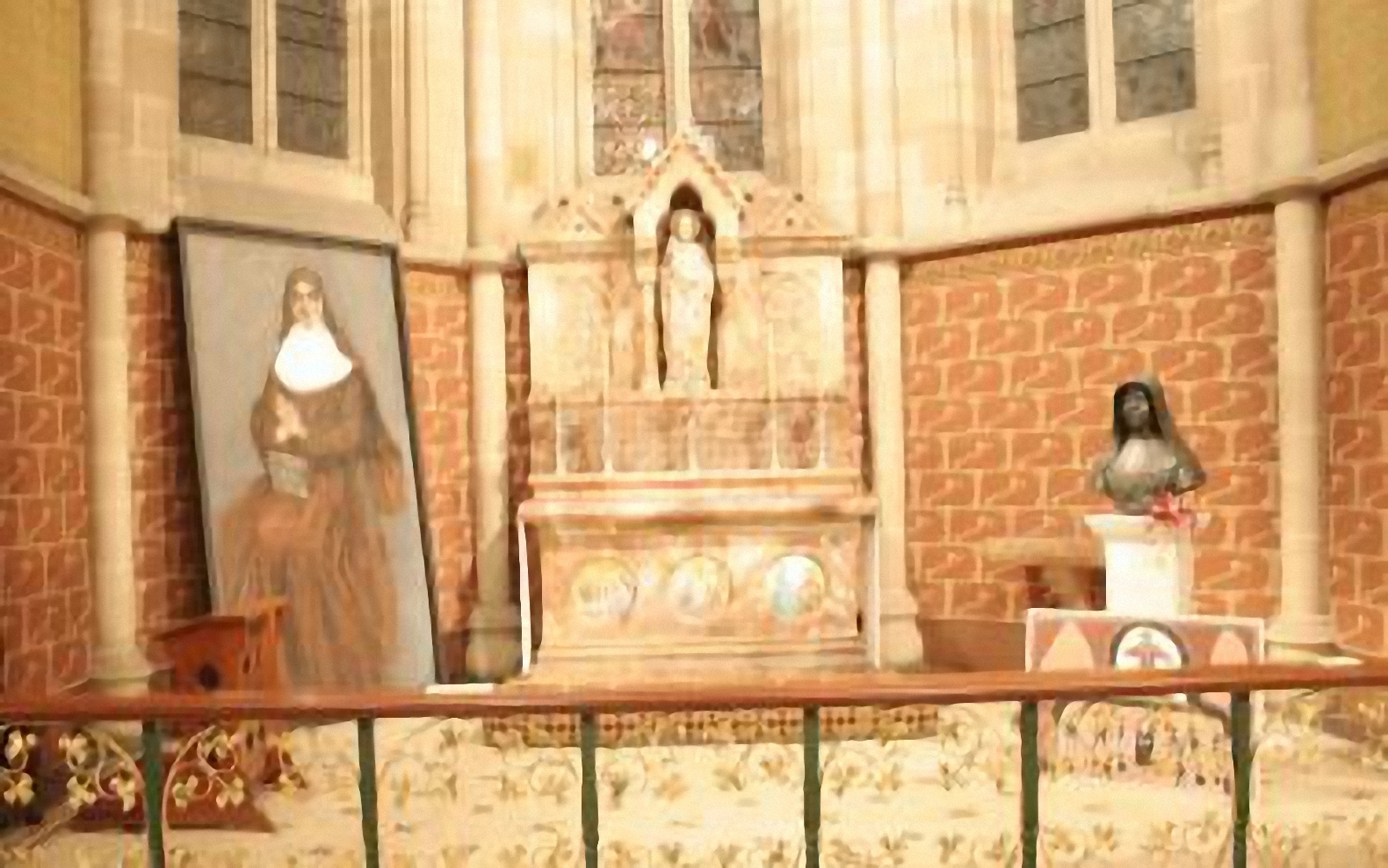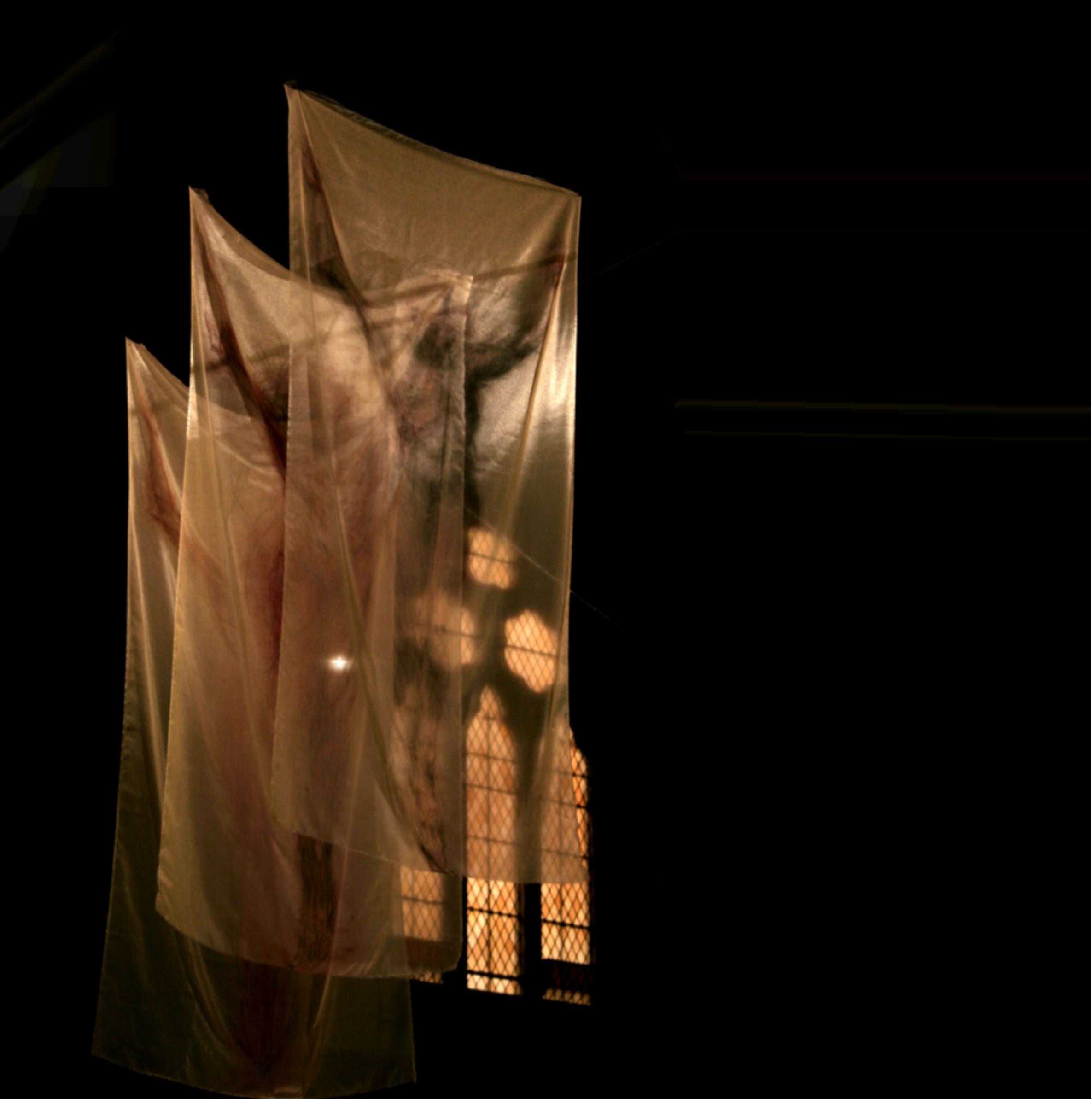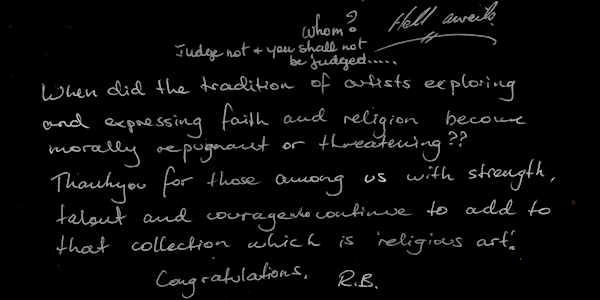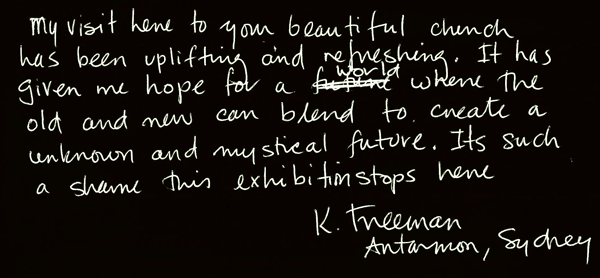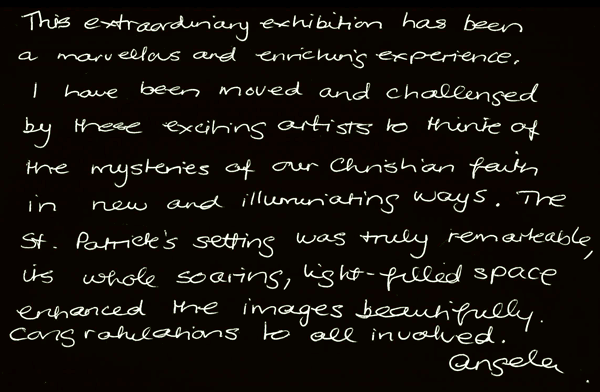CRISIS, CATHARSIS, AND CONTEMPLATION
"Art is born and takes hold
wherever there is a timeless and
insatiable longing for the
spiritual."
Andrei Tarkovsky
This “timeless and insatiable longing” has inspired twenty-two challenging, thoughtful and evocative works for display in two extraordinary locations. Their visual poetry opens an unexpected dialogue between contemporary art and the gothic revival Cathedrals of Melbourne and Sydney. For millennia artists have been bridging the invisible with the visible. Similarly, religious tradition has been witness to and reactivated the Divine mysteries which lie at its core. Religious tradition has been witness to the divine mysteries and constantly reactivated their meaning. The gradual forming of a chasm between the contemporary artist and the Church over an interminable period is rarely addressed in contemporary culture. Crisis, Catharsis and Contemplation comes at a time when the Church is in crisis, most contemporary art struggles to engage religion, and our visual contemplation of the sacred is desperately in decline.
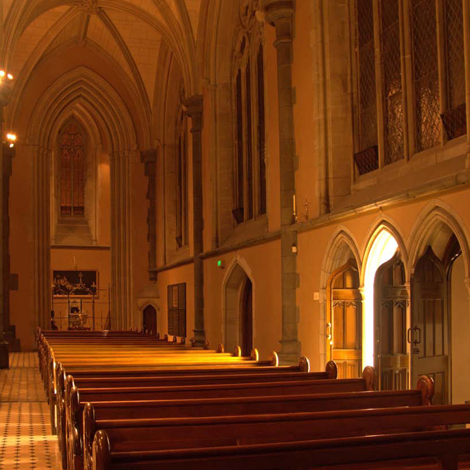
Crisis, Catharsis and Contemplation is not an exhibition of religious art. This is an exhibition of contemporary art in a sacred space, which includes the work of religious and non-religious artists alike. The works are not seen as religious where religion is the subject of art, but see art as the spirit or experience of religion. They are inspired by individual experience, influenced by the Christian story, and challenged by their overwhelming location. Sixteen of Australia’s most interesting artists have responded to the space and themes extracted from the liturgy, scriptures and history of Catholics in Australia. Their works engage with the architecture and art in challenging and sometimes confronting ways. Some works are intimately connected with the artist’s own experience of God, others are little more than thoughtful interruptions in the space. All the works stem from a firm belief that the visual arts have been and will continue to be a powerful means of contemplating the sacred.
In recent times, through Beyond Belief, World Without End, the Blake and Needham Religious Art prizes, Australian artists have explored religion in their art. Claudia Terstappen exhibited her photographs, film and sculptural installations in Places of Worship at Monash University Gallery last year. Her work begged to be installed in a Cathedral. The location of Fire, Water, Sky & Earth in a shrine challenges us to reflect on television’s potential to take the place of an altar in our lives. On another level, her work elevates the natural elements to a place of reverence. Claudia’s Places of Worship-Japan is made all the more efficacious in the confessional – where an intimate encounter with the sacred takes place. It invites people from other faith backgrounds to explore the similarities and differences in culture, and in particular Sacred space. The investment of devotion, prayer and contemplation in places of worship activates the space and imbues it with an ineffable sense of the sacred. In Australia, there is a similar sense of sublime presence in Churches, Temples, Mosques, Synagogues and Aboriginal Sacred sites – each designated as sacred by the powers that be. James Clayden’s active engagement with sacred space in Ghost Paintings 2 deepens the mysterious character and sacredness of the Cathedral. The distorted figures emerging and disappearing in the haunting atmospheric space are evocative of angels in our midst. Clayton Diack’s short film on the Eucharist also draws our attention toward the divine presence in seemingly finite matter.
From sacred space to the gift of
storytelling, three works in the
exhibition respond to the history of
Catholics in Australia. Robert
Drummond reflected on the story of
Mary MacKillop, who founded the order
of nuns that taught him in Brisbane.
His vision of Australia’s first
saint-in-waiting’s determination and
resilience grounded in a life of
prayer is an inspiration to all who
struggle for a good cause. Pioneer
looks at the courage and strength of
Australia’s early priests and bishops
who gave their lives in service of a
persecuted and under-resourced Church,
during uncertain times in an
unknowable land.
The poetry of suffering is a theme
that emerged strongly in the works of
several artists included in this
exhibition. The meticulous handling of
paint in Francis Denton’s Pietà
makes for a deeply personal reflection
on grief. He draws on his own
experience of sacrificial love to
create a moving painting of a mother
overcome with sadness. James Waller
and Grant Fraser have opened the
wounds of suffering to reveal a
painful reality frighteningly close to
all. In a glass case and confessional,
the potent words of Waller, Fraser and
Ahkmatova fill the tiny spaces with
trauma and disturbance. In another
glass case, Godwin Bradbeer’s scourged
figure wrapped around a pillar of
paper stands vulnerably exposed.
Beaten and humiliated, Christ wears
his scars for all to see. Patricia
Semmler’s Agony in the Garden, and
Gerhardt Hoffman’s Crucifix chair
point to the hidden scars of mental
affliction. In the Carrying the
Cross, mental illness is seen as
a cross carried by many people in our
society. The hope expressed in Melissa
Hawkless’ works on paper emerges
scratched and carved out of the pages
of Genesis. The creative act and the
work of art can be a healing power in
this troubled world.
The bright light flooding the
south-west corner of St Patrick’s
Cathedral represents the light of
Christ, pouring out from the empty
tomb. Angela Di Fronzo’s Persona
Christi explores the sacrament
of reconciliation and the intimate
space of the confessional as the space
of conversion and healing.
SACRIFICE
The child victim of a landmine
is a symbol of a wound shared by
all humanity and the dismembered
limbs are a painful reminder of
the consequences of war. James
Waller considers the Master
washing the feet of his
disciples a great model of
service and humility. It is an
invitation to serve one another
– to alleviate the suffering and
to share the burdens from our
journey. In acknowledging the
wounded-ness of our brothers and
sisters, we accept that we are
all broken. In the breaking of
the bread, we recognise our own
broken-ness. Clayton Diack’s
film on the Eucharist as the
source of life and rest for the
heavily burdened is ultimately
about a sacrifice. DR
“When power leads us to
arrogance, poetry reminds us
of our limitations. When power
narrows the area of our
concern, poetry reminds us of
the richness and diversity of
our existence. When power
corrupts, poetry cleanses.”
John F. Kennedy
SUFFERING
The donkey was present at
the birth of Jesus, fled
with the holy family to
Egypt, carried the Messiah
through Jerusalem and for
Patricia Semmler, could
have been present in the
Garden of Gethsemene. A
symbol of loyalty,
meekness, calm and
companionship, the donkey
comforts Jesus in his
moment of agony. The
absence of anyone but the
scourged figure in
Godwin’s work contributes
to a sense of man’s
vulnerability. The
classically drawn figure
on rolled paper stands
exposed; naked and
scarred. DR
“In a dark time, the eye
begins to see”
Theodore Roethke
MENTAL ILLNESS
One in five
Australians will
suffer from mental
illness at some
point in their
lives.
(www.nhmrc.gov.au)
Gerhardt Hoffman
suffered severe
post-traumatic
stress after seeing
his sister crushed
by a tank in the
Second World War.
The carving marks on
his Crucifix Chair
appear like shovel
grooves as the
crucified artist
tries to dig his way
out of his pain. The
loneliness, mental
torment and
prejudiced
persecution make
mental illness a
very heavy cross.
The Carrying of the
Cross was inspired
by an eccentric ‘top
hat and tails’
character who wears
a larger than life
crucifix around his
neck but carries a
much heavier cross
hidden on the
inside.
Artworks
Click on area of map to view artwork
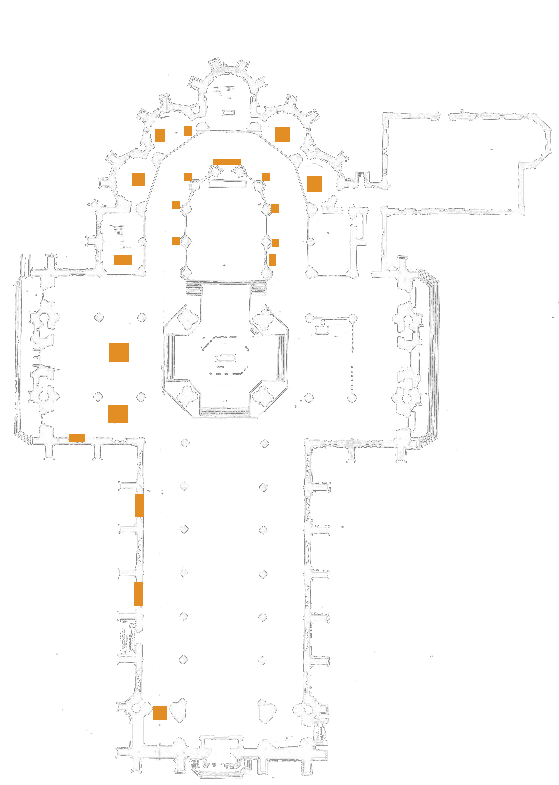
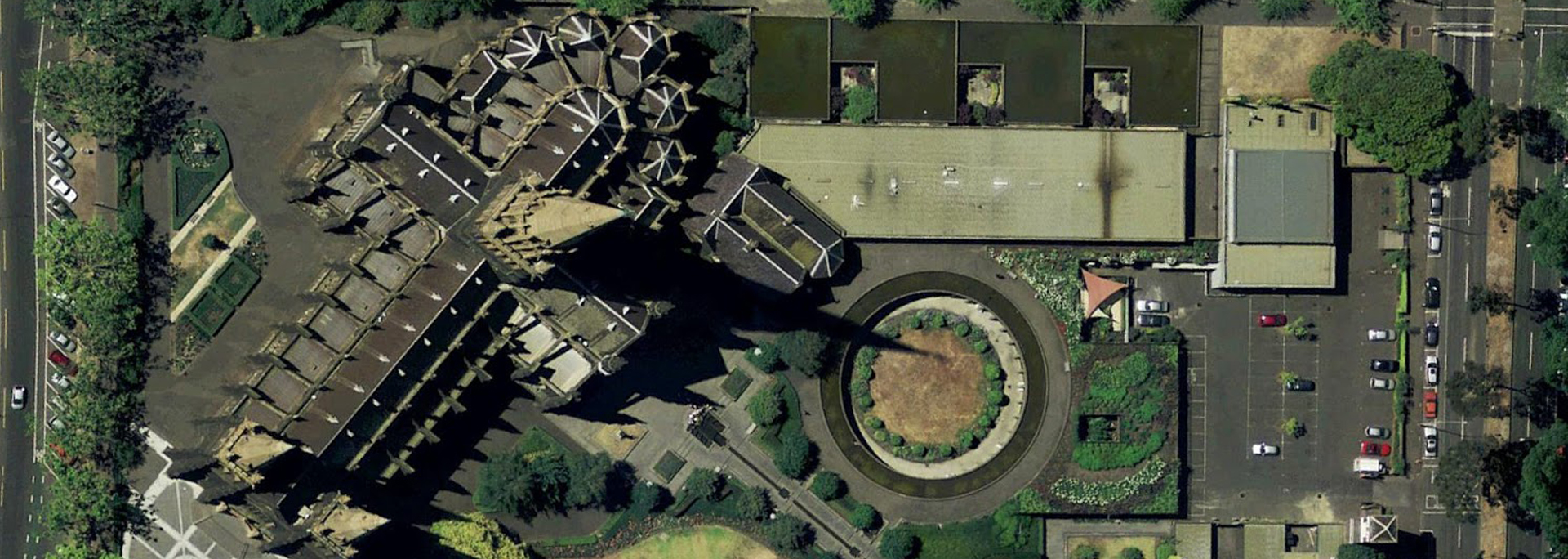
INTRODUCTION
It was Pope
Paul VI who
said that the
split between
faith and
culture was
the drama of
our
time. In
another time,
the Church was
the great
patron of the
arts, and
Christian
faith an
extraordinary
source of
artistic
creativity.
But things
have
changed.
The Church
still produces
devotional art
for its own
purposes, and
much of it is
deeply
evocative.
Yet art, for
the most part,
has taken its
leave of the
Church and
Christian
faith, as has
Western
culture more
generally.
The search for
meaning and
beauty tends
to follow
other
paths.
For
Christianity,
the danger
here is that
it can find
itself in a
kind of
billabong in
which it can
only repeat
the forms of
the
past. It
can find
itself a
stranger to
the quest to
forge meaning
and show forth
beauty in ways
attuned to the
deeper
currents of
culture
today.
But this
cannot be the
way of a
Church called
always to
speak the word
of Christ –
ultimately
meaningful,
ultimately
beautiful – in
the idioms of
today.
At the heart
of
Christianity,
there must be
a creative
tension
between the
forms of the
past and the
forms of the
present,
between
devotional art
and art that
stands outside
the circle of
faith, between
sacred space
and the still
resonant
spaces created
by art which,
if not
explicitly
sacred, is
clearly open
to the
transcendent.
Such a tension
will tend to
subvert
conventional
and perhaps
too-easy
perceptions of
meaning and
beauty in
order to bring
to birth new
perceptions
which are more
difficult and
more
revelatory.
That is why
this
exhibition,
Crisis,
Catharsis and
Contemplation,
strikes the
right
note. It
sets the
tension and
strikes up a
conversation
which may at
times be
unsettling but
which can also
be enriching,
even enabling,
both for
Christian
faith and for
art.
Bishop Mark
Coleridge
Auxiliary
Bishop of
Melbourne
ESSAY
"Art is
born and takes
hold wherever
there is a
timeless and
insatiable
longing for
the
spiritual."
Andrei
Tarkovsky
This “timeless
and insatiable
longing” has
inspired
twenty-two
challenging,
thoughtful and
evocative
works for
display in two
extraordinary
locations.
Their visual
poetry opens
an unexpected
dialogue
between
contemporary
art and the
gothic revival
Cathedrals of
Melbourne and
Sydney. For
millennia
artists have
been bridging
the invisible
with the
visible.
Similarly,
religious
tradition has
been witness
to and
reactivated
the Divine
mysteries
which lie at
its core.
Religious
tradition has
been witness
to the divine
mysteries and
constantly
reactivated
their meaning.
The gradual
forming of a
chasm between
the
contemporary
artist and the
Church over an
interminable
period is
rarely
addressed in
contemporary
culture. Crisis,
Catharsis and
Contemplation
comes at a
time when the
Church is in
crisis, most
contemporary
art struggles
to engage
religion, and
our visual
contemplation
of the sacred
is desperately
in decline.
......
Read moreArtist Conversation
The
following is
an edited
transcript of
a discussion
between David
Rastas, Robert
Klein
Boonschate,
Lindy
Patterson, and
James Waller
concerning the
nature of
sacred space
in respect to
the cathedral
exhibition,“
Crisis,
Catharsis, and
Contemplation”.
The discussion
was recorded
in the
artists’
studios, with
works in
progress for
the exhibition
hovering
around and
resonating
with ideas as
they arose.
DR: My hope is
that this
exhibition
will help us
rediscover the
Gothic space.
Contemporary
art in the
Cathedral can
help us to see
with new eyes;
this is not a
game; the
experience is
potentially
transformative.
LP: The space
wishes to have
that
transformative
property.
RKB: Yes, and
it can only
achieve that
through public
interaction.
DR: The viewer
is invited
into the heart
of the space
and it is in
the heart that
this encounter
with the
sacred takes
place.
JW: We are
elevated
through the
space
LP: It is a
consecrated
space; made so
through
ritual.
......
Read moreTestimonials
Crisis,
Catharsis, and
Contemplation
April – May
2006
St Patrick’s
Cathedral,
Melbourne
-
Curator David Rastas
Curatorial Assistants Carly Housiaux and Ishmael Bryce
Catalogue Editor Brendan Rodway
Designer Miriam McWilliam
Contributors Bishop Mark Coleridge and Rosemary Crumlin
Artists Patrick Bernard, Godwin Bradbeer, James Clayden, Francis Denton, Clayton Diack, Robert Drummond, Angela Di Fronzo, Grant Fraser, Melissa Hawkless, Gerhardt Hoffman, Robert Klein Boonschate, Queenie McKenzie, Michael Needham, David Rastas, Patricia Semmler, Claudia Terstappen, James Waller
